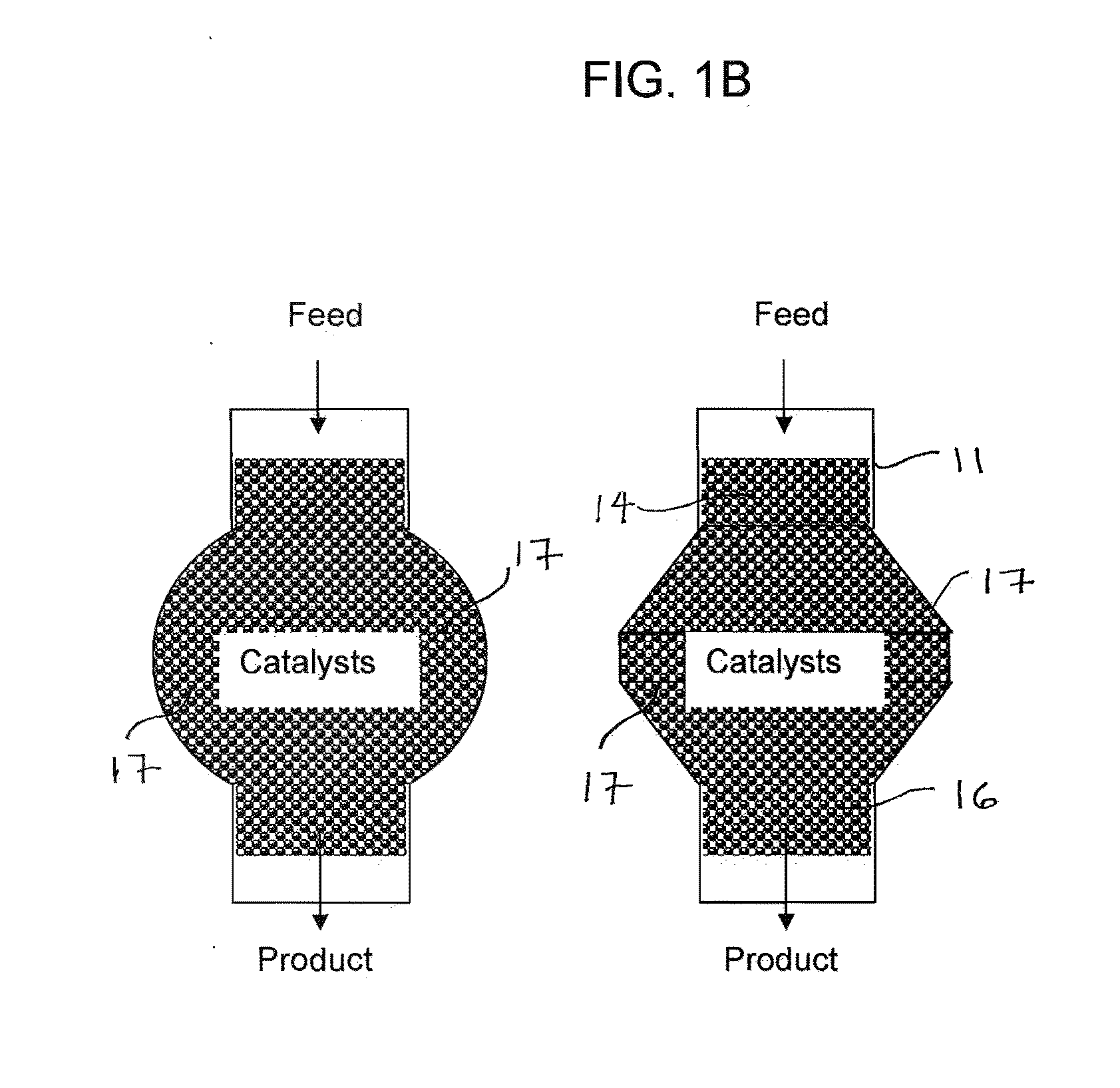Autothermal and partial oxidation reformer-based fuel processor, method for improving catalyst function in autothermal and partial oxidation reformer-based processors
a technology of autothermal and partial oxidation reformer and fuel processor, which is applied in the direction of liquid-gas reaction of thin-film type, gas-gas reaction process, combustible gas production, etc., can solve the problems of low average temperature and therefore lower hydrogen yield, and achieve the effect of discharging thermal energy generated
- Summary
- Abstract
- Description
- Claims
- Application Information
AI Technical Summary
Benefits of technology
Problems solved by technology
Method used
Image
Examples
case b
[0058 shows the scenario where ignition occurs on the Rh-catalyst section (i.e., the downstream portion 16). The exit conversion after the Rh-catalyst is similar between case A and B, but the Rh-catalyst in case B peaks at 970° C., which will damage the reforming catalyst.
[0059]In Case C, ignition occurs again on the Rh-catalyst section but the air-to-fuel ratio is decreased to 0.36 from 0.53 to reduce the peak temperature. The peak temperature of 840° C. seen by the Rh catalyst is the same as in Case A, but because of the lower average bed temperature in Case C, the conversion of the fuel is much lower (80 percent compared to 98.6 percent in Case A).
[0060]FIG. 2 also shows the three portions of the catalyst support, as discussed supra. Specifically, the uncoated portion 18 of the catalyst is designated as “blank foam” in the figure. The oxidation or upstream portion 14 of the catalyst support is designated as “hexa-aluminate.” The reforming or downstream portion 16 of the catalyst ...
PUM
| Property | Measurement | Unit |
|---|---|---|
| temperature | aaaaa | aaaaa |
| length | aaaaa | aaaaa |
| temperature | aaaaa | aaaaa |
Abstract
Description
Claims
Application Information
 Login to View More
Login to View More - R&D
- Intellectual Property
- Life Sciences
- Materials
- Tech Scout
- Unparalleled Data Quality
- Higher Quality Content
- 60% Fewer Hallucinations
Browse by: Latest US Patents, China's latest patents, Technical Efficacy Thesaurus, Application Domain, Technology Topic, Popular Technical Reports.
© 2025 PatSnap. All rights reserved.Legal|Privacy policy|Modern Slavery Act Transparency Statement|Sitemap|About US| Contact US: help@patsnap.com



